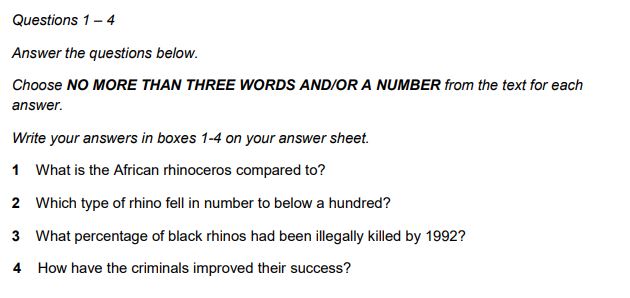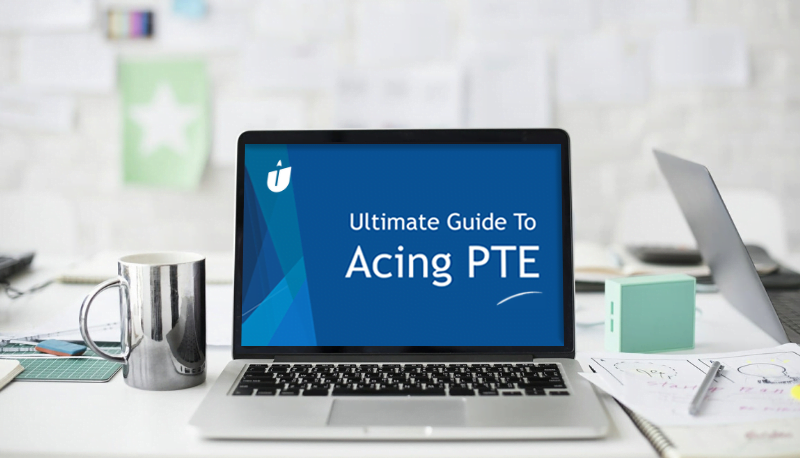Short answer questions are often considered the easiest to tackle in the IELTS Reading test. They require you to read a passage and provide concise answers in one to three words.
While they may seem straightforward, many students make avoidable mistakes due to rushing through the questions. In order to maximize your score and avoid these errors, it is crucial to develop the necessary skills, follow key tips, and employ an effective strategy.
In this article, we will explore these aspects in detail and provide you with examples and model answers to enhance your understanding.
Skills Needed for Short Answer Questions
To excel in short answer questions, you need to master the following skills:
- Quick Skimming: The ability to skim the text swiftly and grasp its general meaning is essential. Skimming allows you to identify the main ideas and locate relevant information efficiently.
- Key Word Identification: Pay attention to keywords in the questions. These words act as indicators, guiding you to the specific information you need to answer the questions.
- Scanning: Scanning involves a rapid search of the text to find precise details or answers to specific questions. It helps you locate the relevant sections without reading the entire passage in detail.
- Synonym and Paraphrase Recognition: Be adept at recognizing synonyms and paraphrasing. Questions often use different wording while conveying the same meaning as the text, requiring you to make connections between similar concepts.
Key Tips for Short Answer Questions
To tackle short answer questions effectively, keep the following tips in mind:
- Read Questions First: Prioritize understanding the questions before delving into the text. This way, you will know what to look for during your initial skim read.
- Sequential Answers: The answers will usually follow the order of the questions in the text. Once you find the answer to the first question, you can anticipate that the subsequent answer will be nearby.
- Word Limit Adherence: Respect the word limit specified for your answers. If the instructions state, “NO MORE THAN THREE WORDS AND/OR A NUMBER,” ensure your response complies. Even if your answer is correct, exceeding the word limit will result in a wrong marking.
- Use Textual Words: Construct your answer using exact words from the text. It may be necessary to adjust verb tenses to maintain grammatical accuracy.
- Synonyms and Paraphrasing: Expect questions to contain synonyms or paraphrases of the text. While the meaning remains the same, the wording may differ slightly. Stay vigilant for these variations.
If you are liking this so far, you’ll love the IELTS Smart Hacks PDF I’ve prepared for you.

Download the PDF here: 11 Hacks To Ace IELTS
Strategy for Short Answer Questions
Follow this step-by-step strategy when tackling short answer questions in your IELTS Reading test:
- Careful Reading of Instructions: Thoroughly read and understand the instructions, paying particular attention to word limits for your answers.
- Comprehend the Questions: Read the questions carefully to grasp their essence. Underline keywords and consider possible synonyms to broaden your search scope.
- Skim Read the Text: Skim through the text, focusing on keywords and synonyms you identified. Avoid reading every detail; instead, concentrate on the first sentence of each paragraph to capture the main ideas.
- Locate the Answer: Revisit question 1, and scan the initial paragraphs, possibly the second paragraph as well, until you find the relevant information. Then, read that portion more attentively to identify the exact words required for your answer.
- Repeat for Each Question: Repeat the process outlined in step 4 for each question, proceeding sequentially. Utilize skimming and scanning techniques to efficiently locate the necessary information.
In addition to this blog, explore our Free MasterClass on IELTS Speaking. Join our Facebook page to stay updated on the latest tips and guidance.
Example with Answers
To demonstrate the strategy and provide an opportunity for practice, we will use an example derived from the World Wildlife Fund (WWF) website. Although the following example is not from an actual test paper, it will help you understand and apply the outlined approach. Please refer to the source for the text.


Here are some notes on how I answered the questions:
What is the African rhinoceros compared to?
In this question, the key phrase “compared to” indicates that we need to look for a comparison. Upon skimming the text, we encounter the word “like” in the very first sentence, which describes the rhinoceros as “like a tank on legs.” This phrase aligns with the comparison we seek. To confirm, we quickly scan the rest of the paragraph before providing the answer.
Answer 1: tank on legs
Note: Ensure you adhere to the word limit. Writing “a tank on legs” would exceed the allowed three-word limit.
Which type of rhino fell in number to below a hundred?
The keyword “a hundred” suggests that we may encounter the figure “100” in the text. Scanning further, we identify the word “under” as a synonym for “below” in the question. In the text, we find that the “southern” white rhino experienced a decline in numbers “from under 100 in 1895 to over 20,000 in the wild today.” The answer becomes evident as we read the sentence in detail.
Answer 2: southern white rhino
What percentage of black rhinos had been illegally killed by 1992?
This question includes the date “1992” as a keyword, aiding our search. Additionally, the word “black” assumes significance as the preceding text focused on white rhinos. While the phrase “illegally killed” doesn’t directly appear, we anticipate finding a synonym. Our attention is drawn to the term “poaching,” used in place of “illegally killed.” We also recognize that the symbol “%” signifies “percentage.” Armed with these insights, we can identify the answer.
Answer 3: 96%
How have the criminals improved their success?
None of the keywords from the last question appear in the text, requiring us to consider possible paraphrases. Since the final paragraph primarily discusses poaching and poachers, we infer that “criminals” in the question refers to poachers. Among the words present, “increasingly” stands out as a potential synonym for “improved.” The subsequent phrase “better equipped” supports our assumption. Reading the concluding sentence of the paragraph confirms that no better answer is available.
Answer 4: better equipped
By reviewing these additional notes, you can further refine your approach. Apply this strategy, along with the tips provided, to practice answering short answer questions effectively.
If you liked this article, you’ll absolutely love the Free MasterClass on IELTS on Ultimate Academy.
In it, I’ll teach you how to increase your score by 1 Band overnight.

Here’s the link to watch it: IELTS MasterClass
Types of Questions
Familiarize yourself with the various question types. Click on the links below to access valuable insights, including common challenges, tips, and strategies for each type:
Bar Chart Questions
Pie Chart Questions
Table Questions
Map Questions
True, false, not given
Multiple choice
Sentence completion
Summary, note, table, flow-chart completion
Diagram label completion
Matching information
Matching headings
Matching sentence endings
New to IELTS? Here are some FAQs you might have
What is the format of the IELTS Reading test?
The IELTS Reading test consists of three passages, each followed by a set of questions. The passages are taken from books, magazines, newspapers, or online sources.
How many questions are there in the IELTS Reading test?
There are a total of 40 questions in the IELTS Reading test, with about 13-14 questions per passage.
How much time do I have to complete the IELTS Reading test?
You have 60 minutes to complete the entire IELTS Reading test. It is recommended to spend about 20 minutes on each passage and the accompanying questions.
Can I transfer my answers from the question paper to the answer sheet later?
No, you must transfer your answers directly to the answer sheet as you go along. There is no extra time given for transferring answers at the end.
Can I write in capital letters for my answers in the IELTS Reading test?
Yes, you can write your answers in all capital letters or in lowercase letters. However, it is important to be consistent throughout the test.
Are the questions in the IELTS Reading test in the same order as the information in the passage?
Not always. The questions may not follow the exact order of information in the passage. Therefore, it is crucial to carefully read and understand each question before searching for the relevant information in the passage.
Should I read the entire passage before answering the questions?
It is not necessary to read the entire passage before attempting the questions. Skimming and scanning techniques can help you locate specific information efficiently. However, you should read the passage more thoroughly when answering detailed or inference-based questions.
How can I improve my reading speed for the IELTS Reading test?
Practicing regularly and exposing yourself to a wide range of reading materials can help improve your reading speed. Additionally, using skimming and scanning techniques can enhance your ability to quickly find information in the passage.
How can I manage my time effectively in the IELTS Reading test?
Time management is crucial in the IELTS Reading test. It is recommended to allocate a specific amount of time to each passage and its questions. This allows you to pace yourself and ensure that you have enough time for all the questions.
How can I improve my overall performance in the IELTS Reading test?
To improve your performance, practice regularly using authentic IELTS reading materials. Familiarize yourself with different question types and strategies for each type. Work on expanding your vocabulary and improving your reading comprehension skills through extensive reading. Seek feedback from a teacher or a native English speaker to identify areas for improvement.










